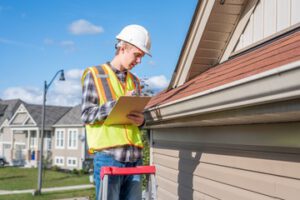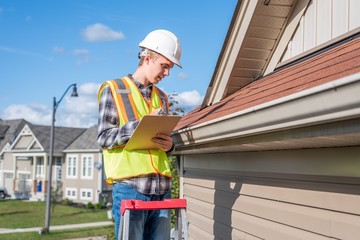Roofing Columbus GA is one of the biggest investments you’ll make in your home. So you want to do what you can to protect it and keep it looking its best.
Roof inspections are a must every few years. This is especially true if you have an older roof or are nearing the end of its lifespan.
Shingles are the most visible part of your roof, so it makes sense that they’re the first thing your roofing inspector will look at. They’ll check for a large variety of damage types over the entire surface of your roof, including soft shingles that indicate dangerous decay stages, brittle or cracking shingles, and moss, mildew, or mold.
Shingle condition is typically determined by a brittle test, which involves bending the shingle upward to see if it breaks. A brittle shingle is usually a sign that the roof has aged, and it needs to be replaced.
Inspecting your shingles for granule loss (texture) is another good indicator that you’ll need to replace them soon. Asphalt shingles are covered with small granules to protect them from the elements, so when the granules come off, it’s an indication that they’ve been damaged, or they’re no longer protecting your home.
Also, if you notice a lot of moss, mildew, or mold on your roof, it’s a sign that these growths are damaging your shingles and underpayment, as well as your home’s structure. This is a common issue with roofs that haven’t been properly maintained, and it can cause your roof to deteriorate quickly.
As your roof ages, the moss, mildew, and mold can actually trap moisture on the shingles, leading to other problems like dry rot. As the moisture becomes trapped, it can cause the shingles to curl or buckle, which compromises the strength and integrity of your roof and lets water in.
Your roof will be inspected for a wide range of other problems, too, including gutters, downspouts, and flashing. These areas are crucial for directing rain away from your home and keeping it dry, so your roofing contractor will make sure that they’re in good working order.
The next time a storm comes through, make sure to inspect your roof for any signs of damage. If your gutters and downspouts are clogged, it can cause debris to collect and potentially flood your roof.
The CDC recommends that all people get the Shingrix vaccine, which is more than 90% effective at preventing shingles. It’s important to get the vaccine even if you have already had chickenpox or received the earlier Zostavax vaccine, which was removed from the market in 2020.
Flashing is used to prevent water from entering the roof at seams and corners where two pieces of roofing material meet. These areas include valleys (areas where two slopes meet), vent pipes, skylights, chimneys and dormers.
During a roof inspection, the inspector will be looking for missing or damaged flashing. He will also be checking the condition of any penetration seals that may have been installed in these areas.
Most flashings are made from a variety of materials, including metals such as galvanized steel and copper. Others are made from plastic and fiberglass. The type of flashing that is best suited for your home depends on the climate. In coastal areas, stainless steel is preferred because it is highly resistant to salt corrosion.
If you notice water stains in the interior of your home, it can indicate that the flashing is no longer protecting your roof properly. This can lead to deterioration of the insulation in your attic and other parts of your house.
You should check your roof flashing at least once a year during a gutter clean-up. This will give you the opportunity to see any holes, mold or corrosion that are present and can help identify problems before they worsen.
The most common signs of flashing damage include curled, cracked or loose flashing. These are usually indicators that the flashing has given way and needs to be replaced.
Another sign of flashing damage is when the caulk that was used to bond the flashing to your roof has rotted and broken off. This can cause mold to grow and make the area vulnerable to leaks.

